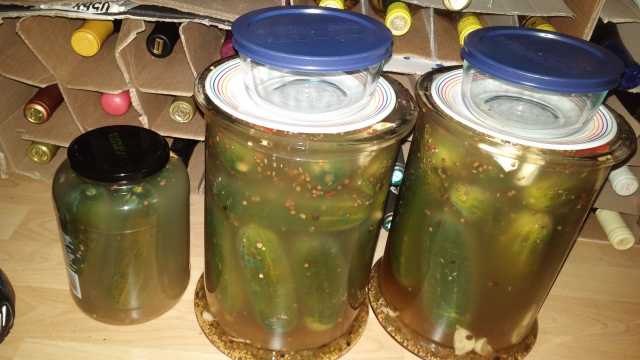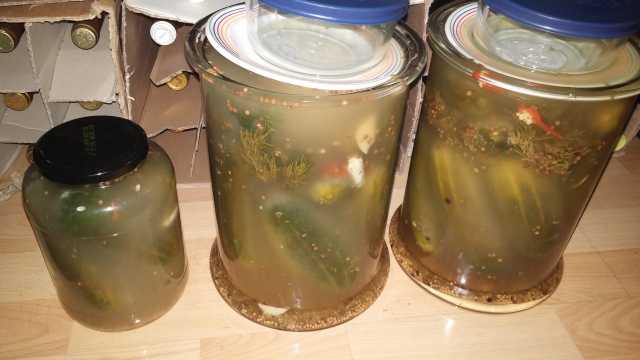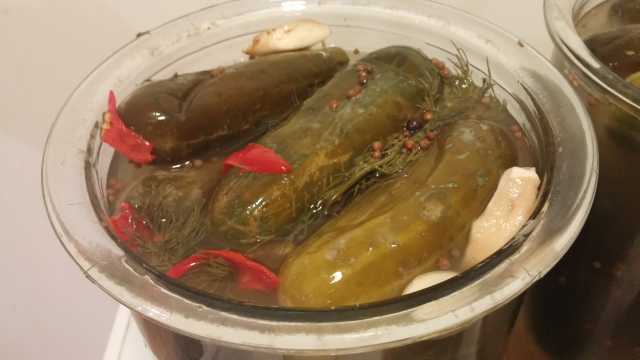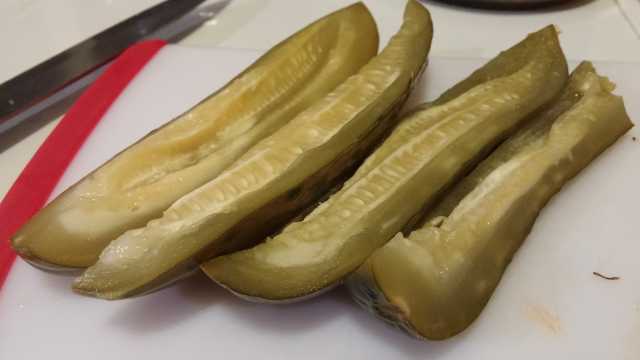Foodies,
A week ago, I was stopping by the Loblaws at Bayview Village near me and noticed they had a truckload of fresh Ontario dill cucumber baskets. We’ve been having a summer-like early start to Fall with the temperatures in the high 20’s (Celsius for you heathen Yankees) resulting in us having an extended local produce season with fresh berries, plums, peaches and nectarines still showing up in our local grocery stores.
So I’m eyeing these baskets and get the sudden inspiration to make real fermented Jewish kosher deli pickles like my late grandma Rita used to make. She was a Romanian Jew who exceled at making traditional Jewish foods like dill pickles, latkes, verenikas, matzo ball soup, cabbage rolls and so on.
Now I’ve made standard brined refrigerator pickles before by boiling water, salt, pickling spices and cider vinegar together and then filling a jar with fresh cucumbers and pouring the brine over them. 4 days later after infusion, you have fresh refrigerator pickles which are really good in and of themselves and better than anything you’ll buy off of a non-refrigerated store shelf in your local grocery store. But fermented pickles are the real Jewish kosher deli deal. So I bought two 4 litre baskets which gave me 34 pickles of varying sizes and set out to make freshly fermented ones.
The first and most important step was finding NON-REACTIVE containers to make these in. You should really only be using glazed ceramic or glass containers for your pickles. So I used two recycled and cleaned supermarket standard pickle jars and two large old-fashioned pharmaceutical glass storage jars. I washed the pickles and then placed them in the jars.
Next step was choosing the aromatics to flavor the pickles. Truthfully, all you need is salt brine and standard packaged pickling spices to make pickles but that’s really boring. Real koshers need some kick to them so I settled on fresh dill, lots of fresh garlic, dill seeds and the magic ingredient: Thai red chili peppers for some spiciness.
Next came the brine. I researched a lot of recipes on the Internet and I wasn’t convinced by any of their proportions. The basic problem is that salt kills the bad bacteria but can also ruin the taste of your pickles of too much of it is used. So striking the right balance was necessary. I ended up using Alton Brown’s recipe of ½ cup non-iodized salt to 1 US gallon (16 cups) of bottled water. DO NOT USE TAP WATER, it’s got chlorine and other crap in there that will ruin your pickles. I heated 1 quart of water and dissolved ½ cup of Pink Himalayan salt in it and then added the rest of the water to cool it down and be able to jar right away.
So the proportion went as follows in the large crocks:
• 12-14 fresh dill pickles of varying sizes
• 1 bunch fresh dill
• 6 large cloves of garlic
• 4 Tbsp pre-packaged pickling spice
• 1 Tbsp dill seed
• 4 Thai red chili peppers
For the smaller 2 L jars, I just cut the above proportions in half. Then I filled the two crocks and jars up to the brim with brine. For the crocks, I placed a small saucer plate on top to hold the pickles under but chose not to use the covers to let the CO2 escape and not have a pickle bomb mess on the floor. For the jars, I just place the standard lid on top without screwing it on tight.
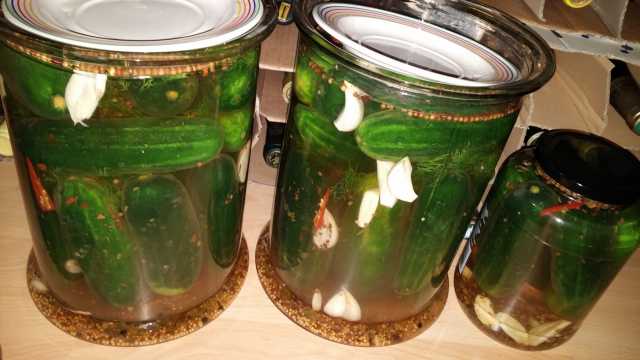
As you can see by my pictures, fermentation started the very next day as the brine got cloudly and just kept going from there.
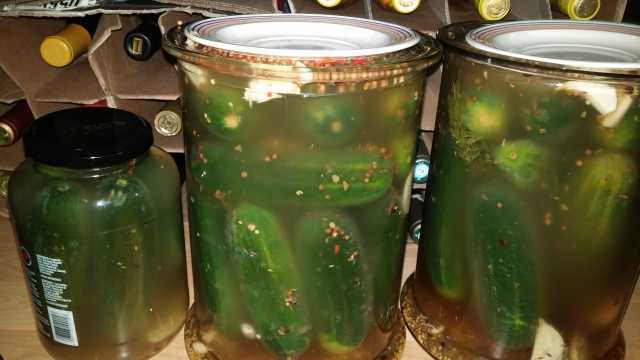
On the third day, I had the foresight to taste both the brine and the pickles via a small slice of one to see how they were doing. I could actually hear the bubbling going on so I knew lactic fermentation was happening. There was nowhere near enough salt for my taste so I added two more tablespoons to each crock and one more to each jar. Next time I am doubling the amount of salt to make a brine of 1 cup salt to 1 gallon water. I also had to weight down the plates with some Pyrex containers just to keep them under the brine.
